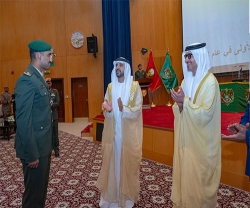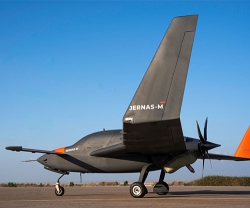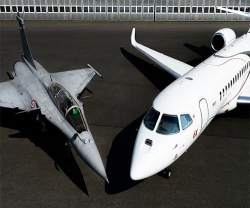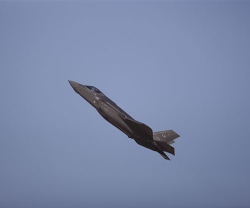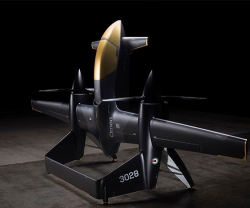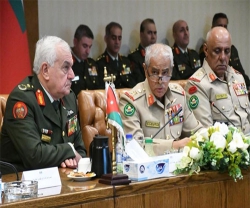The Emirates Mars Mission team announced Sunday that the Hope Probe, which successfully entered the orbit of Mars last Tuesday, has sent the first image of the Red Planet.
Having travelled more than 493 million kilometers over the past seven months, millions in the UAE, the Arab region and around the world have eagerly awaited to see the first image taken by the Hope Probe, which will be immortalized in history as the first image of an Arab probe to reach Mars, Emirates news agency WAM reported.
Titled ‘EMM catches Olympus Mons at Sunrise’, the picture was taken by the EXI digital exploration camera, one of EMM’s three scientific instruments. It is a multi-wavelength radiation tolerant camera that can take 12-megapixel images and took the image from an altitude of around 25,000 km above the Martian surface.
The flexible readout modes allow customization of resolution, regions of interest and frame rate to meet the needs of the user. The lens system is a double lens assembly with a separate UV and VIS optical paths. The type of lens used is a double Gauss variant, a compound type lens used to provide high-resolution imaging of Mars. The low focal ratio makes it possible to use very short exposure times to capture stable images during periapsis while fitting both lens systems into a compact package. The image sensor is a 12-megapixel 12-bit monochrome CMOS array 4:3 imager.
The color is created from a composite of red, green, and blue EXI images. The North Pole of Mars is in the upper left of the image. EMM captured the largest volcano in the solar system, Olympus Mons (center), emerging into the early morning sunlight.More prominent are the three large shield volcanoes of Tharsis Montes (Ascraeus Mons, Pavonis Mons, and Arisia Mons).
Further to the East or right of the volcanoes lie Noctis Labyrinthus and the Valles Marineris system of canyons, filled with clouds. Ice clouds are present over the southern highlands (lower right) as well as surrounding the volcano Alba Mons (upper left).
Clouds can also be seen above the limb (top of image and middle right, when looking between the planet and space). These clouds, seen in different geographic regions and at different times of day, provide a preview of EMM’s contributions to understanding the Martian atmosphere.
EXI provides more precise instrumental characterization, i.e., lower radiometric uncertainty of scientific imaging (needed for high accuracy retrievals of cloud optical depth). For the UV lens system, short-wavelength UV-C (245-275 nm) and long-wavelength UV-A (305-335 nm) will be covered. As for the VIS lens system, it will cover the bands; Red (625-645 nm), Green (506-586 nm) and Blue (405-469 nm).
The picture is the first of more than 1,000 GB of new Mars data that the Probe will send back to earth and that will be shared for free with more than 200 academic and scientific institutions around the world.
For the first time, it will study the link between weather change and atmospheric loss, a process that may have caused the Red Planet’s surface corrosion and the loss of its upper atmosphere.
The mission will provide deeper insights into the climatic dynamics of the Red Planet through observing the weather phenomena in Mars such as the massive famous dust storms that have been known to engulf the Red Planet, as compared to the short and localized dust storms on earth. It will focus on better understanding the link between weather changes in Mars’ lower atmosphere, with the loss of hydrogen and oxygen from the upper layers of the atmosphere.
The Hope Probe also carries the second infrared spectrometer, Emirates Mars Infrared Spectrometer (EMIRS), which studies the lower atmosphere of the Red Planet in the infrared band, measures the global distribution of dust, ice clouds, water vapors, and temperature profiles, and provides the linkages from the lower to the upper atmosphere in conjunction with EMUS and EXI observations.
The third instrument carried by the probe to study Mars is the Emirates Mars Ultraviolet Spectrometer (EMUS). It detects ultraviolet wavelength and determines the abundance and variability of carbon monoxide and oxygen in the thermosphere on sub-seasonal timescales. It also calculates the three-dimensional structure and variability of oxygen and hydrogen in the exosphere and measures the relative changes in the thermosphere.






